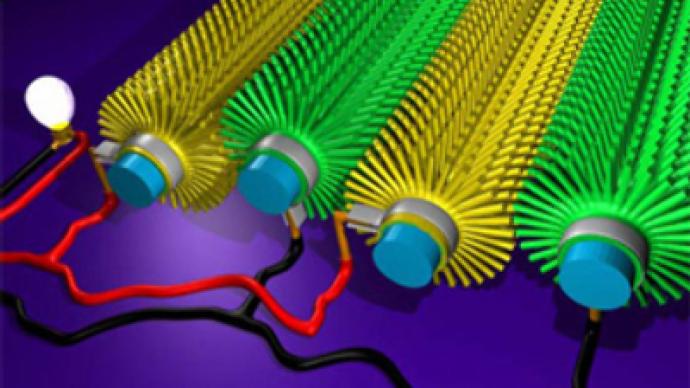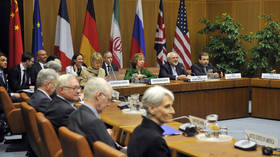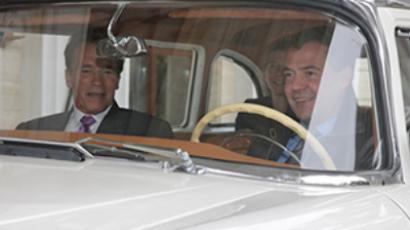Nanoscale dynamo to power biosensors and iPods

Scientists have developed a nanosize device that can generate electric current from mechanical stress. This technology helps tap the ‘free’ energy our bodies produce.
The ‘nanogenerator’ is based on piezoelectric effect, which has been known for more than a century. Some materials, mostly crystals like quartz, produce electric current when squeezed. Today piezoelectric elements have found a wide range of applications from cigarette lighters, to sound detectors, to precision atomic force microscopes.
However, applying the effect to the tiny lengths of the nanoworld is a novelty. Professor Zhong Lin Wang presented the technology to make a nanosized piezoelectric generator to the American Chemical Society’s 237th National Meeting on Thursday, reports Science magazine. The device relies on flexible zinc oxide (ZnO) nanowires grown on a metal electrode and encased in rigid polymer. When the wires are bended, an electric current is generated.
Wang, a researcher at the School of Material Science and Engineering at the Georgia Institute of Technology, says nanogenerators can operate in a vide variety of environments. Electricity can be generated by movement of our bodies, the beat of our heart, or even by wind.
“Quite simply, this technology can be used to generate energy under any circumstances as long as there is movement,” said Wang.
So far, the research team has been able to generate 0.2 volts with an efficiency of only 6.8%. The performance of conventional batteries is much better, but Wang says the technology can be used for some practical applications, if many nanogenerators are integrated.
Development of a reliable and efficient power source is a requirement for many nanotechnology applications, and Wang’s device can fit right in. It can also be used to recharge cellular phones, iPods, and other mobile devices for free.
The military also put great hope on the project, since it may power numerous sensors and communication devices needed for integrating combat units on the battlefield. The research was partially funded by the Pentagon’s Defense Advanced Research Projects Agency.













